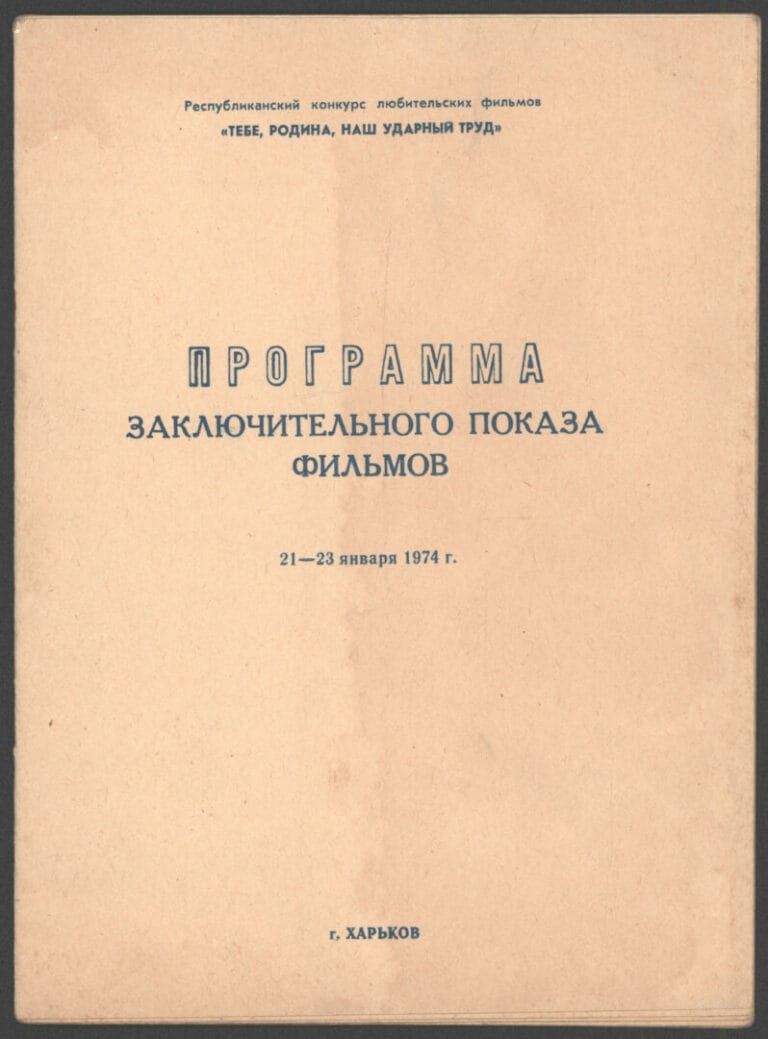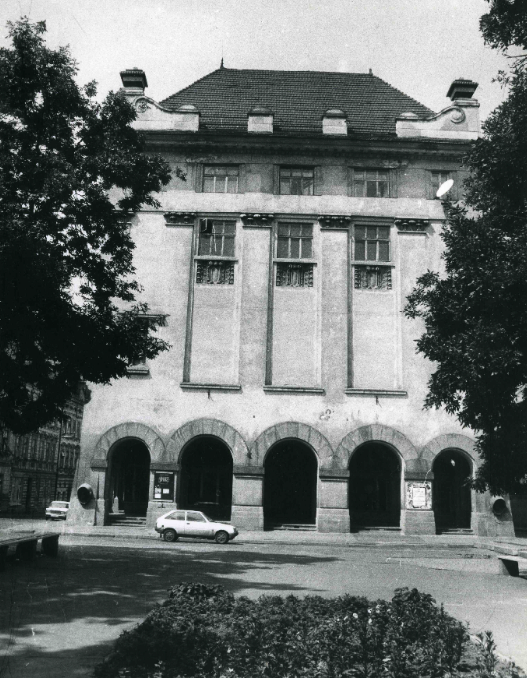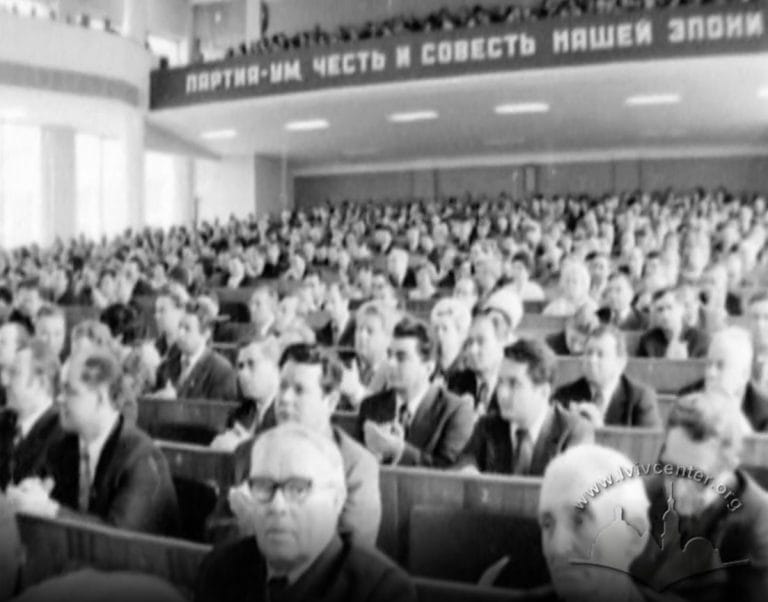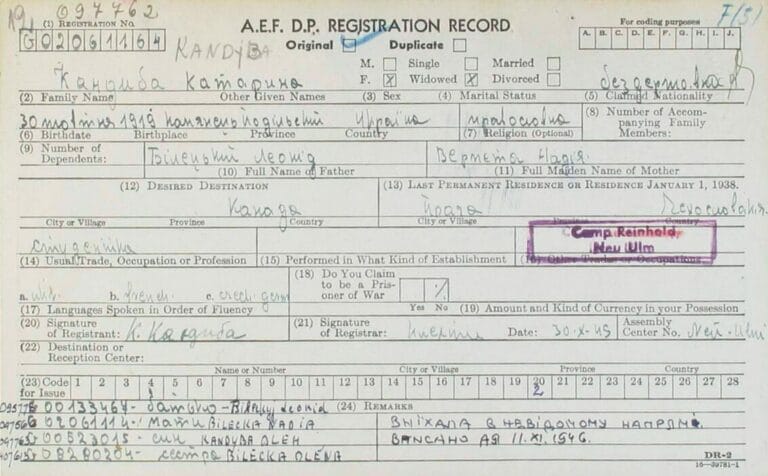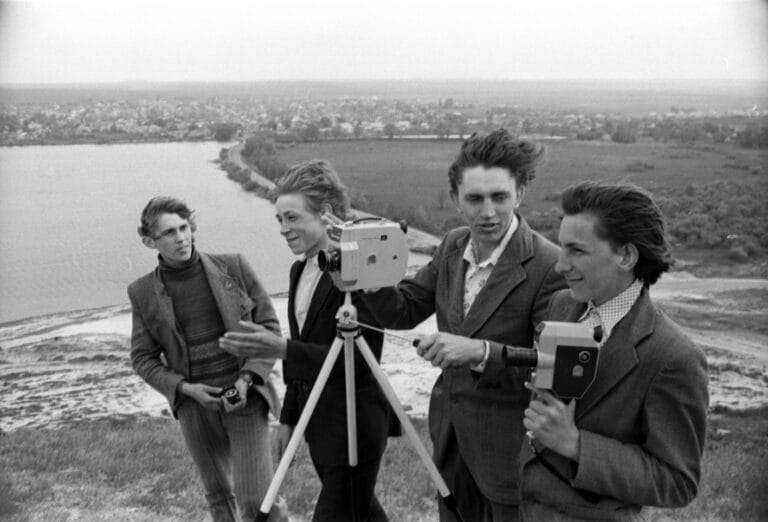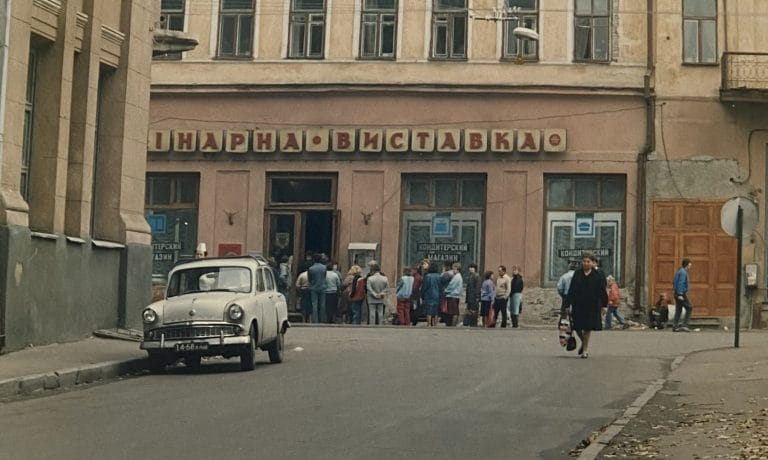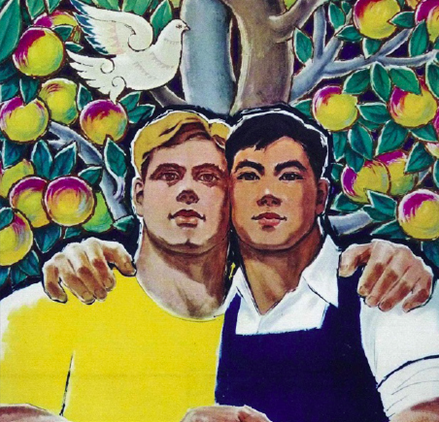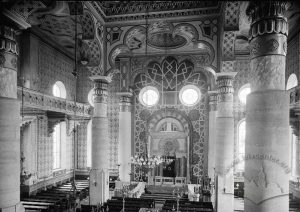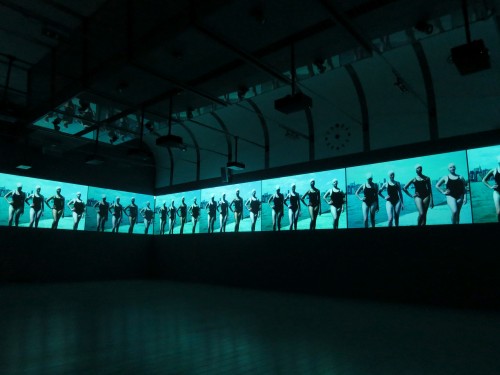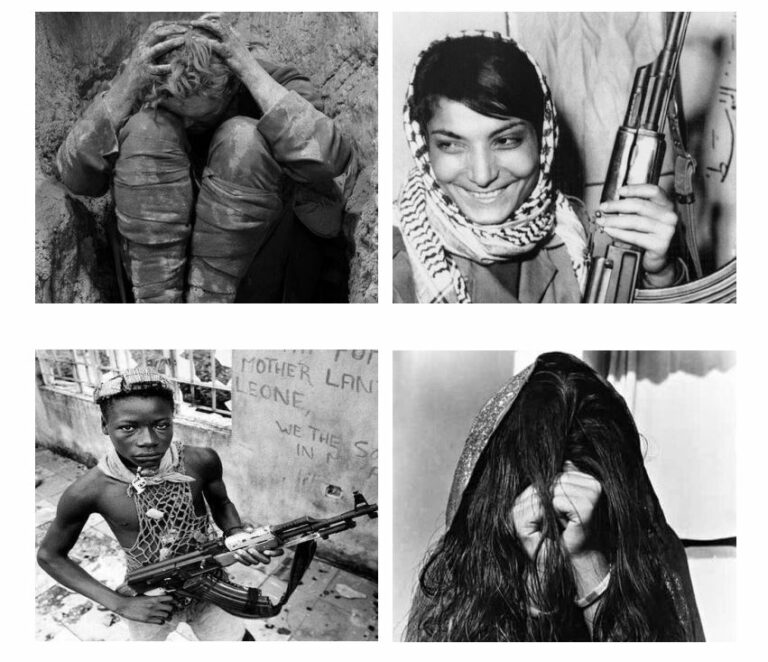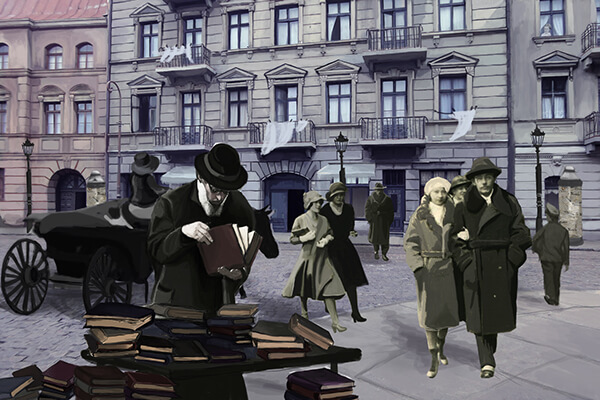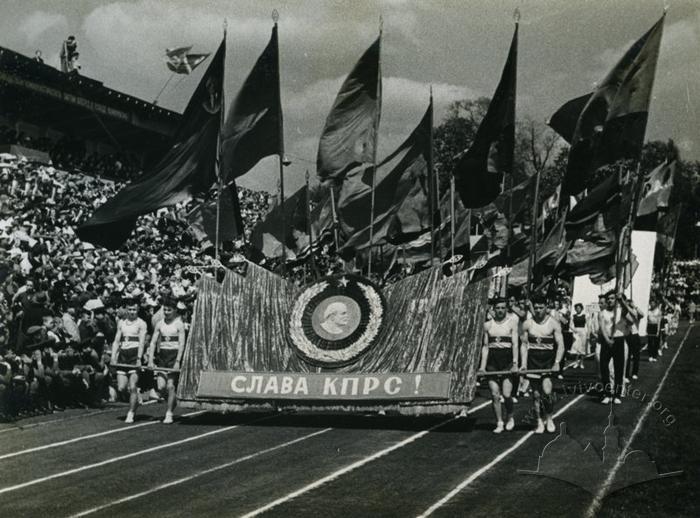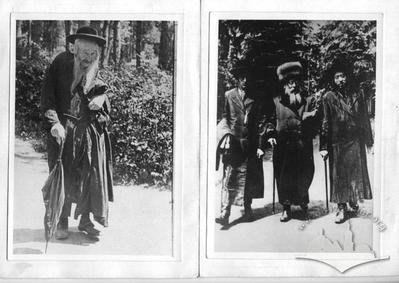1970s
Primary Sources

Letter from Vasyl Stus to PEN International, 11 August 1976
This letter, written by Ukrainian poet, literary critic, human rights activist, and dissident Vasyl Stus, was addressed to PEN International, the global association of writers. Stus penned the letter while serving a sentence in a labor camp in the village of Matrosovo, Tenkivsk District, Magadan Oblast, USSR. He was convicted under Article 62 of the Criminal Code of the Ukrainian SSR (analogous to Article 70 of the Criminal Code of the RSFSR), which charged him with “Anti-Soviet agitation and propaganda.” The letter later became evidence in a new criminal case initiated against Stus in 1980, following his return to Kyiv after completing his initial eight-year sentence. This appeal to the international literary community...

Directorate of Foreign Broadcasting of the USSR State Television and Radio Broadcasting on the Secrecy Regime and Work with Foreigners, 1977
This report, delivered by Leonid Avksentiev, editor-in-chief of the Main Directorate of Radio Broadcasting to Foreign Countries (Directorate of Foreign Broadcasting) under the Ukrainian SSR State Committee for Television and Radio Broadcasting, was presented at the Directorate’s general party meeting in August 1977. The document is held at the Central State Archive of Public Associations and Ukrainian Studies (ЦДАГОУ) in Kyiv. The Directorate of Foreign Broadcasting of the Ukrainian SSR State TV and Radio Broadcasting managed Radio Kyiv, the Ukrainian Soviet broadcasting station that operated on shortwave radio, primarily aimed at Europe and North America, from 1950 to 1991. As part of the broader network of Soviet international broadcasting, Radio Kyiv focused on...

Illegal Construction of Dachas in Kherson, 1970
The satisfaction of Soviet citizens’ basic needs led to a growing demand for an improved quality of life, with one key indicator being access to comfortable recreation. Members of the nomenklatura became active participants in the establishment of “gardening societies,” which involved allocating land plots to factory workers for gardening and horticulture. However, the widely publicized “Kherson case” revealed that their interest lay less in gardening and more in personal comfort. Instead of allowing the construction of simple “summer-type buildings,” the nomenklatura opted for “permanent brick large summer cottages, often equipped with heating.” These practices not only violated the 1960 government decree banning the construction of such dachas but also involved the illegal...

Financial Fraud by High-Ranking Party Officials in the Voroshylovhrad Oblast of the Ukrainian SSR, Early 1970s
Nelia Nemyrynska, born in 1930 in Odesa, worked as a lawyer at the Luhansk Bar Association beginning in 1954. Over her career, she defended and provided moral support to dissidents such as Mykola Rudenko, Yosyp Zisels, and others. In her memoirs, written in 1995, she exposed the darker side of Soviet justice: backroom deals, the political dependence of judges, the dictates of the CPSU, the impunity of the nomenklatura, and more. A fragment of her memoirs recounts two cases she deemed “not quite ordinary for the period of communist rule in Ukraine and the former USSR.” These cases vividly illustrate the interplay between the nomenklatura and the legal system. The first case involves...

Using Official Position to Write a Dissertation, 1975
The case of a second secretary of an oblast committee, later a deputy minister, reveals a pattern of misconduct, though none directly related to his official duties. According to the ruling, the official had long demonstrated an ambition for academic recognition. This ambition was easily realized due to his high position and, as sources suggest, the authoritarian leadership style. Inspired by the ease with which he could expand his scientific legacy, the high-ranking official seemingly lost self-restraint and exceeded the bounds of propriety. The “involvement of a number of employees in the preparation” of his dissertation, reportedly occurring during his tenure in the oblast committee, evolved after its defense into coercing “officially subordinate...

“V Sozvezdii Respublik-Sester” Article by Soviet Ukrainian Top-official Oleksandr Lyashko, 1972
The source is an issue of "Pravda Ukrainy," a newspaper of the Central Committee of the Communist Party of Ukraine, the Verkhovna Rada, and the Council of Ministers of the Ukrainian SSR, which features an article by Oleksandr Lyashko, Chairman of the Presidium of the Supreme Soviet of the Ukrainian SSR. The essay, entitled “In the Constellation of Sister Republics,” is dedicated to the fiftieth anniversary of the founding of the USSR and reflects the propagandistic tone typical of Soviet journalism. The main purpose of the article is to glorify the achievements of socialism, demonstrate the unity of the republics, and strengthen loyalty to the policies of the Communist Party. The text was...
Show more
Collapse all

Amateur Media and Life in Cheryomushky
In addition to the official media (ekklesia)—the imagined narratives and myths presented through theatrical performances, films, and other sanctioned representations consumed by Soviet citizens in the agora (for instance, in cinemas as part of the public sphere, or via television as a window onto it)—there also existed a private sphere (oikos). But how can we uncover what everyday life was like for ordinary people? One valuable source for accessing this lived reality is amateur film recordings, which captured fragments of daily life in cheryomushky and khrushchovkas. The Soviet Union maintained a unique ideological system that simultaneously restricted and encouraged amateur media. The state promoted amateur filmmaking through official clubs—such as those...
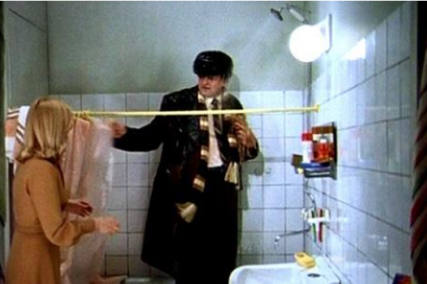
The Irony of Fate, or Enjoy Your Bath!, a 1975 Soviet Film
In 1969, Soviet playwrights Emil Braginskiy and Eldar Riazanov wrote the play Enjoy Your Bath! Or Once Upon a Time on New Year’s Eve, which quickly became a favorite in Soviet theaters. In the early 1970s, the decision was made to adapt it for television, leading to the premiere of the two-part TV movie during the New Year’s holidays of 1975–1976. Much like the 1959 Moscow operetta about the Cheryomushki neighborhood, a popular theatrical plot was reimagined in a new medium—this time, not through cinema but television. Unlike the 1963 film musical Cheryomushki, the adaptation took the form of a television movie enriched with numerous musical interludes, which became widely popular after its...
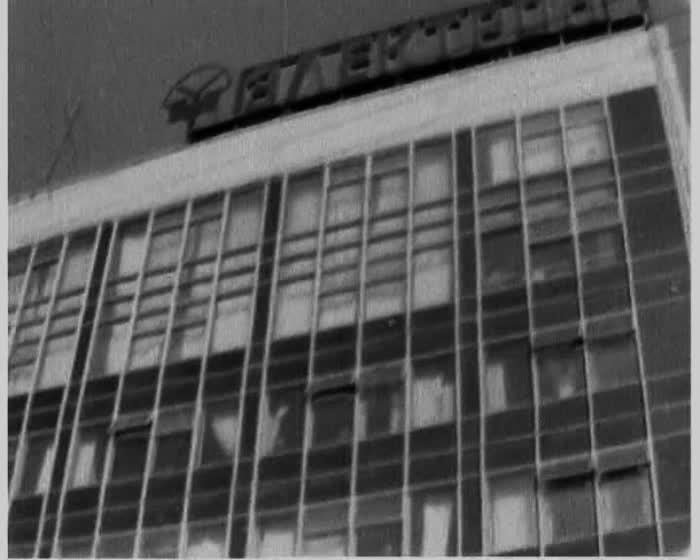
ASUP Can Do More: A 1975 TV Story by Lviv Television
A 1975 news report made for Lviv television describes the use of the ASUP (Avtomatyzovana systema upravlinnya pidpryjemstvom - Automated Enterprise Management System) at the Lviv Electron plant, one of the largest TV manufacturers in the Soviet Union. Developed in cooperation with the Kyiv Institute of Cybernetics between 1964 and 1969, the system employed an electronic computer to perform calculations and record production data, marking the first implementation of its kind in the Soviet Union. The story emerged during a period of technological optimism in Soviet state policy, with the fields of cybernetics and computer engineering having developed over nearly two decades. By 1967, more than 500 institutions and tens of...
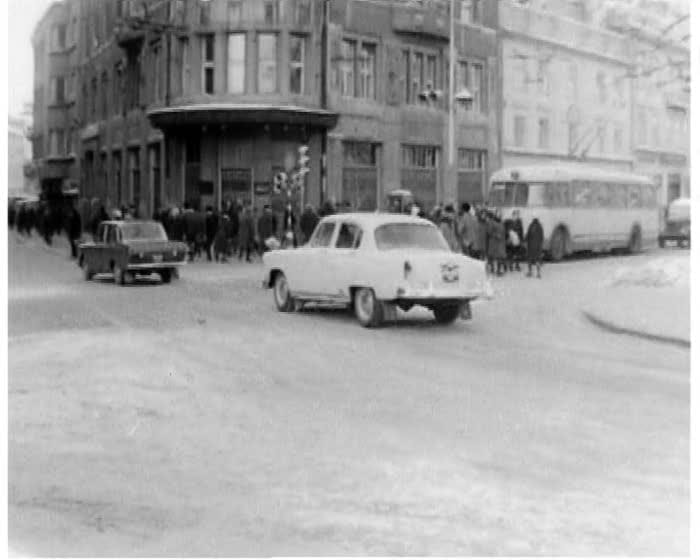
The Electronic Eyes of a Traffic Inspector: A 1971 TV Story by Lviv Television
A 1971 television story produced for Lviv Television news describes an experiment using television cameras to regulate traffic at one of the busiest intersections in the center of Lviv. The source does not provide information about the authors or the context of the device’s development. However, it is known that the Electron plant, one of the largest TV manufacturers in the city at the time, operated a special design bureau for television equipment. This suggests the presence of technological expertise and infrastructure capable of developing such devices using the relatively new technology of transmitting images via television signals. This technology was becoming increasingly popular in various fields, including traffic control. The...

Roman Buchko on Soviet Film Amateurs: Excerpt from an Interview on November 1, 2012
Comment will follow...
In addressing the causes of unlawful actions committed by high-ranking officials in the 1940s and 1960s, the authorities often attributed them to the lingering influence of pre-revolutionary capitalist mentalities among certain managers. This explanation lost credibility over time, as by the 1970s and 1980s, the leadership consisted largely of individuals born and fully socialized within the Soviet Union, supposedly free from the flaws of other, non-communist societies. In this module, Viktor Krupyna uses unpublished archival materials and available source collections to examine the widespread abuse of power by Soviet officials in the Ukrainian SSR in 1945-1991, its causes, scope, and consequences.
This module by literary scholar Olha Petrenko-Tseunova tells the story of Kateryna Biletska-Kandyba, the wife of Oleh Kandyba (known by the literary pseudonym Oleh Olzhych), a poet and member of the Ukrainian nationalist underground, head of the cultural and educational department of the Leadership of Ukrainian Nationalists (PUN) and the Revolutionary Tribunal of the Organization of Ukrainian Nationalists (OUN) (1939-1941), and her WWII experience and post-war emigration.
The early vision of amateur filmmaking in the Soviet Union was characterized by the pragmatic idea of using the new media not only for entertainment but also to involve a wide range of citizens in the production of newsreels and to create a network of correspondents across the country to cover the construction of socialism. However, despite sporadic attempts, this idea was not immediately implemented on a large scale. The lack of technology and sufficient equipment, and later the political climate of the 1930s, hindered this. It was only after liberalization and Khrushchev's reforms that the idea reappeared on the agenda.
In the last decade, the Ukrainian parliament has issued two laws outlining the legal framework for dealing with the Russian imperial and Soviet past. These laws have sparked numerous scholarly debates on how to address the imperial past, Ukraine's status as part of the Romanov Empire and the Soviet Union, and what to do with the cultural products created over the centuries. This course aims to explore the Soviet legacy in present-day Ukraine and provide students with the necessary theoretical and methodological tools for studying, researching, and writing about Soviet history and culture. The implications for modern Ukrainian identity and politics, particularly in the context of the ongoing war with Russia, will be...
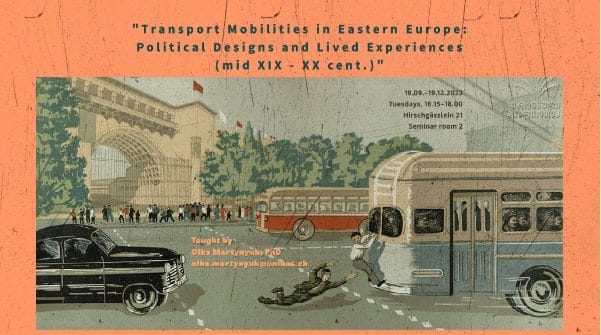 Transport Mobility in Eastern Europe: Political Designs and Lived Experiences (mid XIX – XX Century)
Transport Mobility in Eastern Europe: Political Designs and Lived Experiences (mid XIX – XX Century)
The course invites to explore East-European History of mid XIX - late XX cent. through the concept of mobility, which encompasses movement of people, goods and ideas. Students will deal with a corpus of texts on social history of transportation, as well as with a rich array of visual materials. Of special interest will be cases, specific to the region, for example cultures of Christian and Muslim pilgrimage, Socialist rallies, trolleybus infrastructures or “destalinization” of metro stations. Cases of imported western technologies will provide ground for interregional comparisons, not only in aspects of introduction of transport system, but also in aspects of their exploitation and disintegration. The course is built on a premise...
The course invites to look at the history of Soviet Ukraine from the perspective of its everyday practices. Using many visual sources from 1922 to 1991, students will explore daily routines, housing, clothing, transportation, leisure, and music consumption in urban and rural settings. Periods of peace, war, and crisis will receive equal attention so that one can see how global developments were experienced on a microlevel. Students will explore how maintaining everyday objects and personal habits was essential for building personal safety in different historical contexts. The everyday histories of Soviet Ukraine will also provide a deeper insight into the standard historical narratives about East-European societies, particularly their dialogue with the global society...
This lecture course comparatively and transnationally investigates twentieth-century communism as a modern civilization with a global outreach. It looks at the global spread of communism as an ideology, an everyday experience, and a form of statehood in the Soviet Union, Europe, Asia (i.e.Mao’s China), and post-colonial Africa. With the exception of North America and Australia, communist regimes were established on all continents of the world. The course will examine this historical process from the October Revolution (1917) to the Chernobyl nuclear disaster (1986), which marked the demise of the communist state. The emphasis is not just on state-building processes or Cold War politics but primarily on the social, gender, cultural and economic policies that...
The course explores the history of Russia as an empire from Peter I up to now in the methodological perspective of the new imperial history. What are the historical preconditions and sources of Russian imperialism and militarism? How did the small principality of North-Eastern Europe manage to create the largest empire in the world? To what extent the Russian Empire of the 18th and 19th centuries differed from European colonial empires as well as eastern imperial polities such as Ottoman Empire and China? How did the imperial nationalities policies emerge and evolve? What role did the competition between "great powers" play in turning Russia into an empire? The course attempts to answer these...
The field of social history has achieved the edge of its popularity in 1950-1980s. It was strongly connected with other disciplines, such as economics, demography, sociology, and allowed historians to reach a much wider range of research themes. Since the 1960s, the social history of the Jewish people became important and influential part of the studies. Historians were exploring the possibilities to study Jewish community with new tools and integrating different representatives of Jewish community – workers, women, immigrants, criminals - in a research. Since 1990s historians of Jewish past shifted their interest to cultural studies. However, in the last years, we can see an economic turn, which signifies the search for a...
The aim of the course is to get to know how to analyze examples of visual culture, including: fiction films and documentaries, video, photography. Both contemporary and historical materials will be studied, together with theoretical texts and publications (from the area of film and media studies, anthropology, cultural studies and history. Although images are mostly seen, if you want to really know them and understand them really well, you must not only "see" them but also "read" them, that means to analyze them as a complex message/ text. That is why at our course we will firstly discuss some terms and categories, that would help us to read images such as: composition, convention,...
The course aims to discuss the major military conflicts of the twentieth century from a gender perspective. In doing so, the course covers the history of global and local wars in a wide variety of regions, including Europe, Africa, and Asia. However, rather than surveying a vast number of military conflicts, we will use a case study approach to conduct in-depth analyses of external and internal dynamics of military encounters and the role of gendered violence during them.
In our mini-course we will explore cultural interaction between Jews and non-Jews (Ukrainians, Poles, Russians) in the borderlands of the Habsburg and Romanov empires. This is interaction that may have been conscious or unconscious, and may have involved encounter, appropriation, negotiation, exchange and destruction.
This seminar explores ideas and practices of heritage in Eastern and Central Europe between 1945 and now. The course is designed as a set of five meetings, which will include short lecture introductions, seminar discussions, and at the end – practical workshop. Our meetings will be about discussing the texts, addressing cases you will read about or already know. Thіs the seminar will be our common effort in reading, asking questions and searching for answers. Therefore it is crucial that you will read assigned parts of selected texts and also consult texts from the recommended reading list. While reading assigned texts, please keep a short track of your ideas and formulate several questions...
Our main focus in this class will consist in Jewish experiences with cities in the twentieth century. Geographically, our center of attention will be Central and Eastern Europe (with our main – but not exclusive – emphasis on territories that, at one point or the other, came under Soviet rule); chronologically, we will concentrate (unevenly) on the period between the end of the First World War and the end of the Soviet Union. In particular, the Holocaust and the Second World War were events of central and terrible importance for this period and area. Accordingly, we will pay special attention to them.
Ukraine’s twentieth century was tragically marked by much politically motivated violence and authoritarian regimes as well as movements, from the radical left and the radical right. These forces and events did not only do great harm in the past but left memories and legacies that are still challenging to contemporary Ukraine. In this class, we will focus on several key issues of history, memory, and politics. The readings cannot be exhaustive. Instead, our aim is to read and discuss a sample of important short texts that allow us to reflect more broadly on the underlying questions.
This course was a part of Jewish History, Multiethnic Past, and Common Heritage: Urban Experience in Eastern Europe summer school.
This course forms a part of Jewish History, Multiethnic Past, and Common Heritage: Urban Experience in Eastern Europe summer school.
The course will cover the major development of the East European Jewry from the mid-eighteenth century till the present. More specifically, it will focus on the apparently largest category of modern Jewish history, i.e. modernity itself. The course will start with the discussion of what modernity means in contemporary scholarly discourse, and—more specifically—how it is applied today in historiography of East European Jewry. This introduction will provide a frame for the focus of the course: the analysis of the changing life patters and differing strategies of adopting, rejecting, or negotiating modernity in every-day lives of East European Jews.

